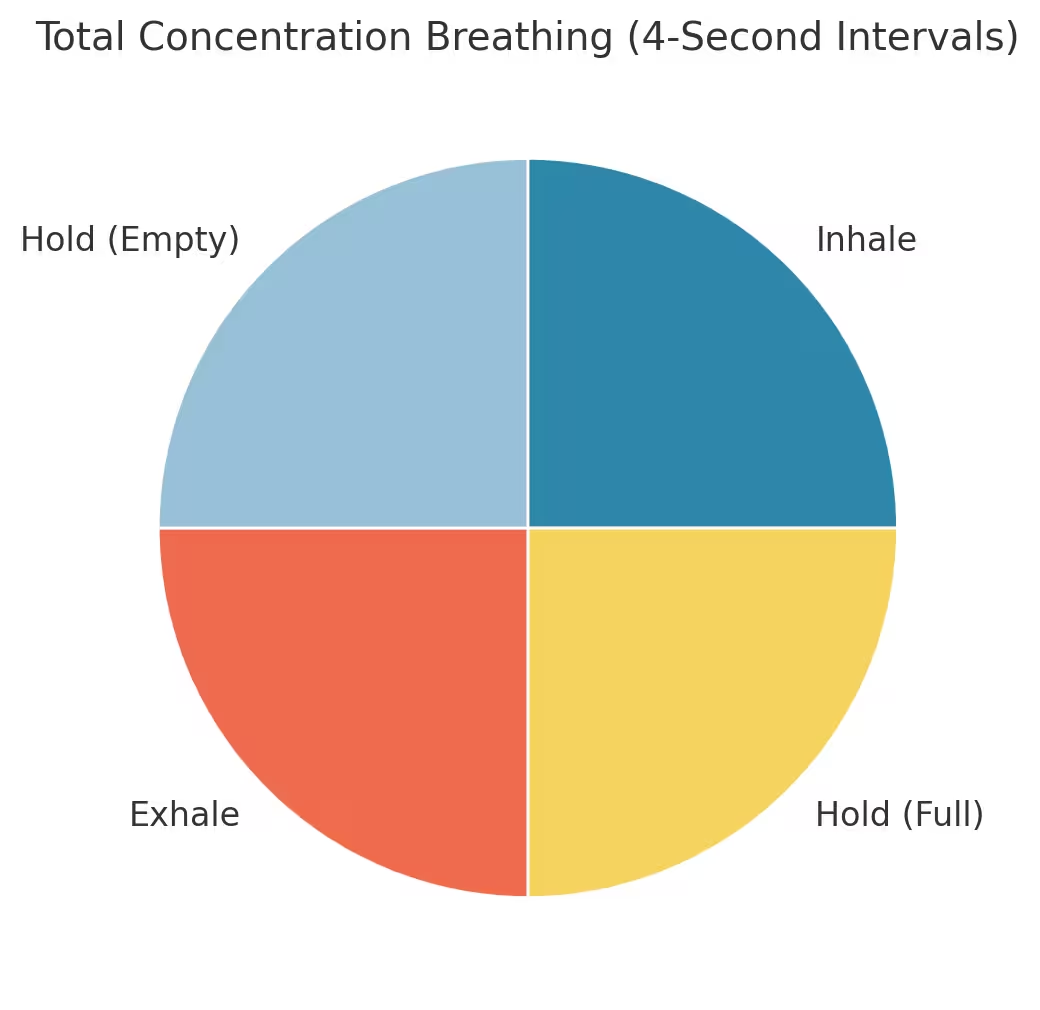Total Concentration Breathing (4-Second Intervals)
A rhythmic, box-style breathing technique used to cultivate focus, regulate the nervous system, and deepen mind-body awareness.

🔄 Breathing Cycle
Each cycle includes:
- Inhale — 4 seconds (through the nose, full breath)
- Hold (Full) — 4 seconds (lungs full, body still)
- Exhale — 4 seconds (slow, through the mouth)
- Hold (Empty) — 4 seconds (embrace the pause)
Repeat for 4–10 rounds based on your intention:
- 🔥 Focus & Power: 4 rounds, eyes open, upright posture
- 🌊 Calm & Reset: 8–10 rounds, eyes closed, soften body
- 🌌 Sleep & Surrender: Lying down, continue until body relaxes

📖 Glossary of Key Terms and Values
| Term | Definition |
|---|---|
| Box Breathing | Equal-length breathing phases (e.g. 4-4-4-4) used to reset the nervous system |
| Nervous System | Governs bodily responses; includes sympathetic and parasympathetic systems |
| Parasympathetic | The “rest and digest” state — slows heart rate, relaxes body |
| Vagus Nerve | Major nerve that regulates parasympathetic activity via breath, voice, and gut |
| Interoception | Awareness of internal states — breath, heartbeat, gut |
| HRV | Heart Rate Variability, a measure of nervous system health and flexibility |
| Focus Mode | A calm, clear mental state with minimal internal distraction |
| Soma | The living body as felt from within, not as an object |
🧠 Scientific References
- Brown, R. P., & Gerbarg, P. L. (2005). Sudarshan Kriya yogic breathing in the treatment of stress, anxiety, and depression: Part II—clinical applications and guidelines. Journal of Alternative and Complementary Medicine, 11(4), 711–717. https://doi.org/10.1089/acm.2005.11.711
- Jerath, R., Edry, J. W., Barnes, V. A., & Jerath, V. (2006). Physiology of long pranayamic breathing: Neural respiratory elements may provide a mechanism that explains how slow deep breathing shifts the autonomic nervous system. Medical Hypotheses, 67(3), 566–571. https://doi.org/10.1016/j.mehy.2006.02.042
- Porges, S. W. (2011). The polyvagal theory: Neurophysiological foundations of emotions, attachment, communication, and self-regulation. W. W. Norton & Company.
Published
Reading Time
⏱️ 2 min read
Category
Tags
Author
✍️ Antonio Rodriguez Martinez
💬 Join the Conversation
Share your thoughts, ask questions, or simply let me know what resonated with you. I read and respond to every comment personally.
Comments are loading...
If comments don't appear, you can join the discussion on GitHub
First-time visitors: A discussion thread will be created automatically when you comment.